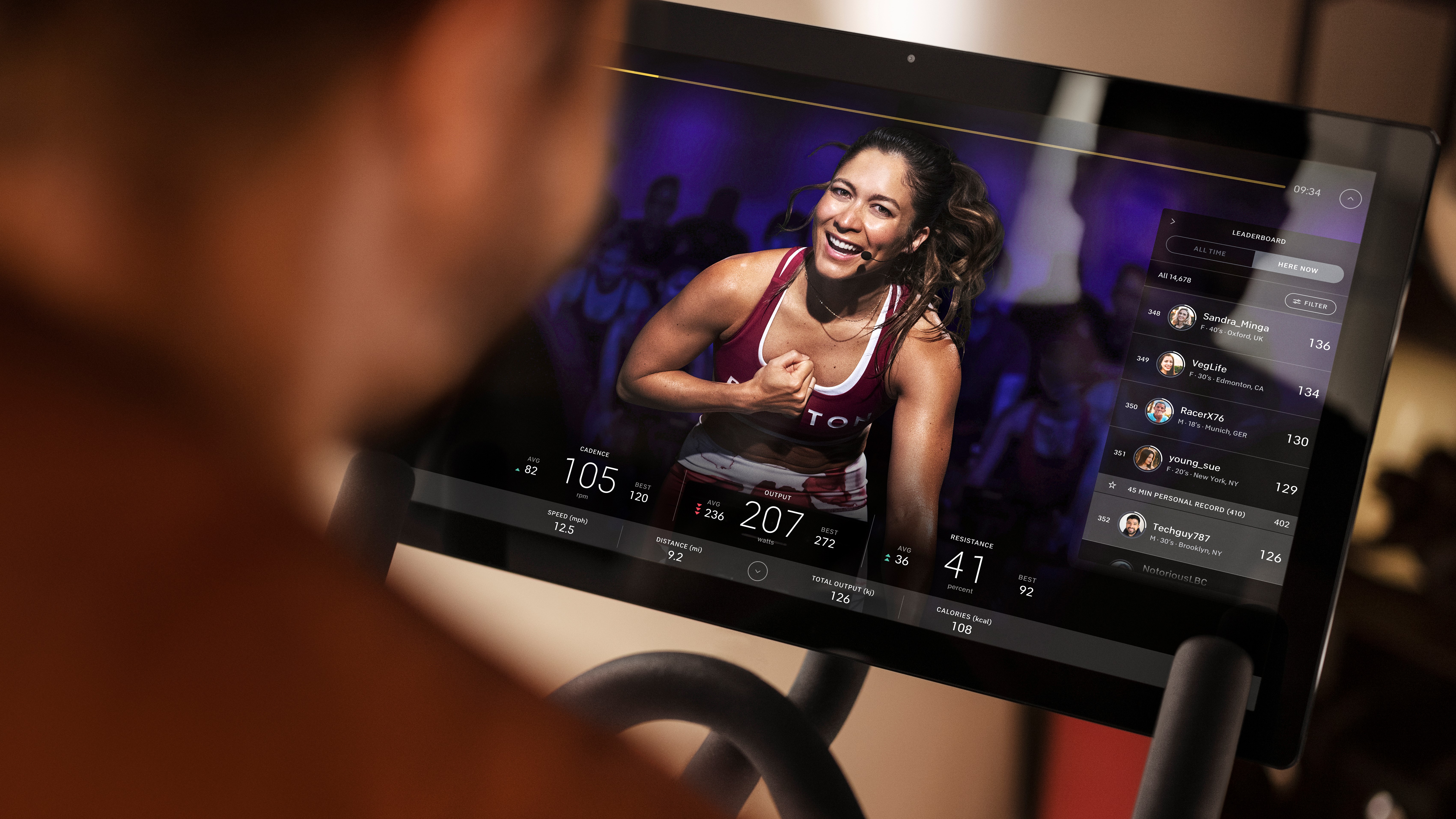How to do an FTP test on a Peloton
This trick will help supercharge your training.

If you're lucky enough to have a Peloton Bike or a Peloton Bike Plus in your living room, you’ve probably been clocking up hours of rides. But even if you're part of the Century Club, you might not know — or may have forgotten — about this cool hidden. No, unfortunately, it’s not a way to fast forward the hilly sections of your next Jess Sims ride, but doing an FTP test on your bike can make a big difference to your daily classes.
What is an FTP test?
Whether you’re using a Pelton or one of the other best exercise bikes on the market, an FTP test is a brilliant way to keep track of your cycling progress. FTP stands for Functional Threshold Power and is a measure of the best average power you could put out over an hour. To do an FTP test, you’ll need an exercise bike with a power meter, but if you’re on a Peloton, you can do the 20-minute fitness test on the bike.
A good FTP for an average cyclist is thought to be around 250 to 300 watts, while professional cyclists usually average around 400 watts. The higher the FTP, the fitter you are, and an FTP test is often a good marker of cycling efficiency and fitness.
@its2021and ♬ original sound - A Girl Has No Name
For Peloton users, doing an FTP test allows you to utilize the bike’s Power Zones during your day-to-day classes, allowing you to visibly see on the screen how hard you’re pushing yourself. Once you’ve completed an FTP test, you’ll be able to add a bar to the bottom of your screen, displaying your Power Zones. There are also specific Power Zone classes that’ll encourage you to remain in different zones at different times throughout the class.
To add the bar, click your username in the left-hand corner of your Peloton, click the red gear symbol in the top left corner, and click on Preferences. Under “Power Zones”, click “Edit Power Zones” and “Custom Value.” Here, you enter the average output from your 20-minute FTP Test ride, then click “OK.” Make sure “Display Power Zones” is selected.
As you get fitter, you might find certain power zones easier to reach. You can then re-take your FTP test, and adjust the zones. Find out more about Power Zone training on the Peloton here.
What are the benefits of knowing your FTP zones?
If you were cycling in a race, you wouldn’t start at your max effort. Doing an FTP test, or knowing your FTP zones will help you better understand your cycling abilities, so you can better push and pace yourself in workouts.
Sign up to get the BEST of Tom's Guide direct to your inbox.
Get instant access to breaking news, the hottest reviews, great deals and helpful tips.
What’s more, an FTP test is a brilliant marker to see how you’re progressing in your cycling training. The fitter you get, the higher your FTP will be. Cycling trainers recommend doing your FTP every six weeks or so if you’re putting out serious training.
Finally, knowing your training zones is super important when it comes to not overtraining. It’s tempting to jump on your bike and put out a max effort every session, but this is a sure-fire way to overtrain, which often results in injury. Knowing when you’re in recovery mode and when you’re in tempo mode is important if you’re cycling regularly.
How do you find the FTP test on the Peloton?
You’ll find the FTP test where you find your classes on the Peloton Bike. It’s a 20-minute test, and it’s a good idea to do a warm-up beforehand. Unlike other rides, the test is designed to leave you exhausted — it’s a test of your endurance and fitness, and shouldn’t be taken lightly! Peloton has a blog post on how to ace the FTP test, but our main advice is to do this one on fresh legs and to have a towel to hand.
To improve your FTP, try adding more hill rides or faster sprints to your workouts rather than opting for slow, steady rides.
For more fitness-related guides, ensure you read our tutorials on how to hide your address details in Strava and how to run with your dog.

Jane McGuire is Tom's Guide's Fitness editor, which means she looks after everything fitness related - from running gear to yoga mats. An avid runner, Jane has tested and reviewed fitness products for the past five years, so knows what to look for when finding a good running watch or a pair of shorts with pockets big enough for your smartphone. When she's not pounding the pavements, you'll find Jane striding round the Surrey Hills, taking far too many photos of her puppy.
